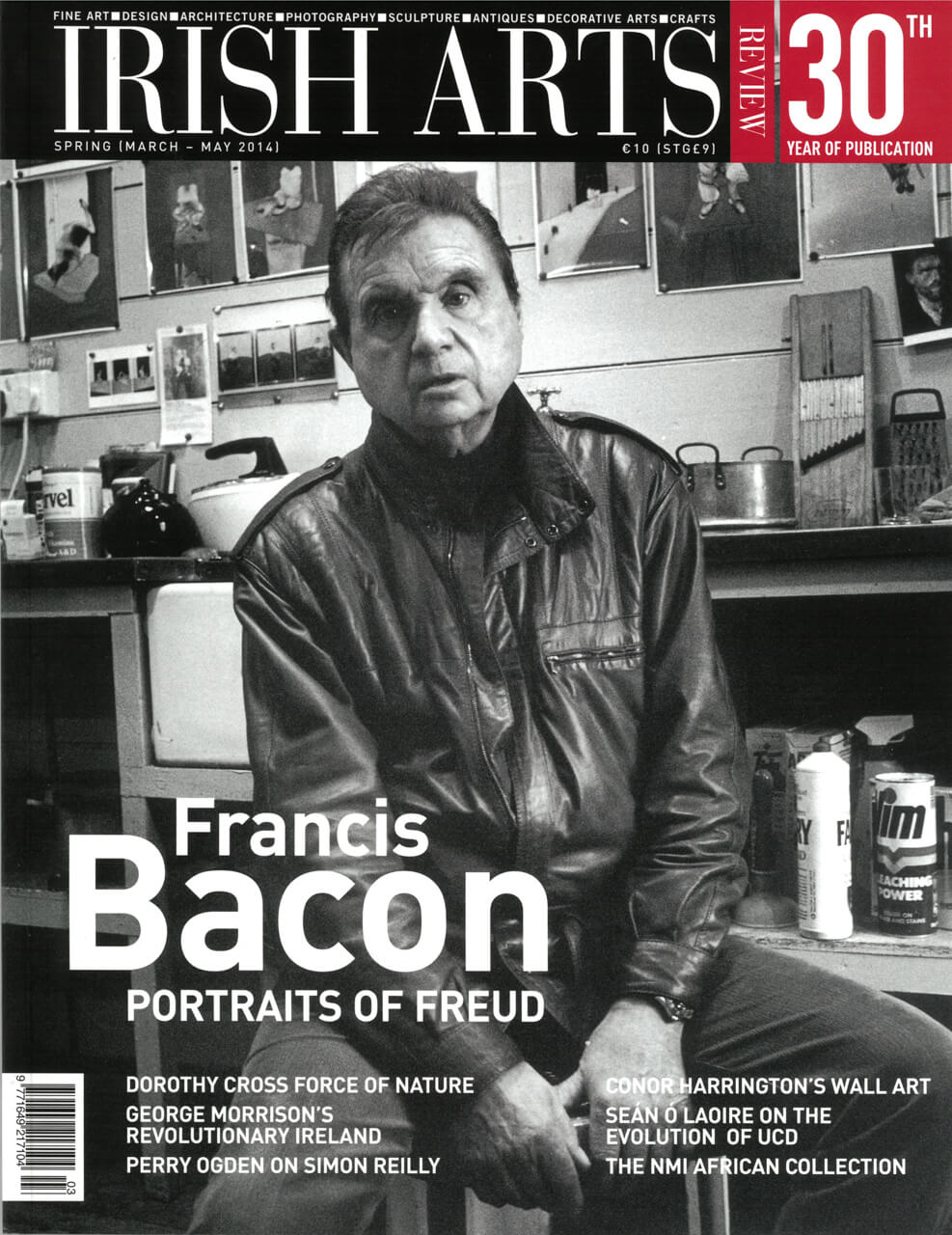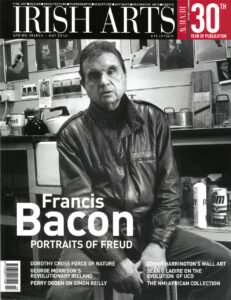

Without decisive action, our glass heritage will once again be lost, argues Eleanor Flegg, as Róisín de Buitléar’s exhibition’Caution! Fragile’ receives an enthusiastic reception Stateside
Click Here to watch CAUTION! Fragile video
My own analogy of glass is to imagine that it is actually made of light; light trapped between two polished skins. Scratch the surface and light is released at that place. The engraver’s task is to find and release the light in the way that best expresses his ideas.
Simon Whistler – Engraver 2005
When the Waterford Crystal factory at Kilbarry closed its gates in 2009 Ireland shrugged and turned the other way. What outcry there was focused, quite legitimately, on the high-handed way in which the workers had been treated. There were also understandable fears for how Waterford, already struggling in the economic crisis, would absorb the loss of another large employer. The city was on its knees and, within the larger crisis, there seemed little public awareness that Ireland was losing more than just another factory and that Waterford Crystal represented a repository of skill in glassmaking unparalleled in Western Europe.
The contents of the factory, including all the glassmaking equipment and machinery, were put up for public auction in September 2009. Prior to the auction, which took place on line, the lots were available to view in Kilbarry. ‘On the day of the auction viewing I walked the factory and witnessed our glassmaking heritage for sale,’ said Róisín de Buitléar, an artist based in Dublin (Fig 5). ‘I despaired at the disintegration of this highly skilled workforce, the loss of an historical archive of traditional and industrial process, and the loss of potential for a new generation to work in glass.’ Amid the bidders were independent artists like de Buitléar and glassmaking facilities across the world, but also a number of Waterford Crystal’s former employees. Some of these, like Fred Curtis, Greg Sullivan and Eamonn Hartley had set up their own studios. With no prior opportunity to buy the machines that they had used for most of their working lives, they now had to compete with the rest of the world to bid for the equipment.
Because there are so many different techniques involved in glassmaking it can be difficult to appreciate just how specialized the skills involved actually are. Glassblowing, the most theatrical of all the processes, is only part of the picture. Curtis, for example, is a carver and sculptor who sculpts from a large block of glass, in much the same way as a stone carver would, except that the process is reversed. Where stone is static, placed on a block so that the sculptor can move around it, glass is carved with a wheel mounted on a lathe. The block of glass is mobile in the hands as the maker moves it over the lathe, dripping under the constant flow of water that keeps the glass cool, lest it fracture under the heat of friction. The fragility of the material is always an issue. Copper wheel engraving, in which Sullivan and Hartley specialize, is a three-dimensional drawing technique in which, once again, the glass is manipulated over a mounted wheel as the maker carves into the surface with tiny, repeated marks. The maker works in reverse, creating an image in which the part that will be in the foreground of the finished piece is the deepest cut. Again, the risk factor is enormous.
Irish cut crystal is much better understood in America than in Ireland, partly because there is a wider and more educated interest in glass
Waterford has a tradition of glassmaking that dates back to the 18th century, but with a hundred year hiatus between the 1850s and 1950s, when it was re-invented from scratch by a Czechoslovakian entrepreneur. Because skill in glassmaking takes a long time to acquire and must be taught in person, there were no longer skilled Irish makers by the mid 20th century and the ability to make glass was re-taught to Irish apprentices by the Czechoslovakian master craftsmen, like Miroslav Havel, who trained both Hartley and Sullivan. These makers, with the demise of the factory, now represent a skill-set that is significant on an international scale and, unless they have the opportunity to train younger makers, irreplaceable.
Demonstrations, such as those at the House of Waterford Crystal on the Mall in Waterford, can be misleading because they make the various processes look easy. Such demonstrations are also misleading on another level: they give the impression that production in Waterford continues. In fact, the sixteen glasscutters and ten glassblowers employed to demonstrate represent the sum total of making in Waterford. All other pieces sold under the brand are made outside the country. ‘We have this heritage that is current, but also latent because it’s not being used, said de Buitléar, ‘and we’re trading on a lie.’ It is possible, she feels, that the lack of public concern about the endangered heritage of glassmaking in Ireland is due to the negative image of Waterford Crystal in Ireland. ‘People do not respect it and I have yet to meet someone who went out and bought a piece for themselves. It’s something that you give as a present. People see it as an emblem of Ireland, but they can’t see beyond that cut crystal vase presented by dignitaries on St Patrick’s Day. They don’t understand or respect the skill involved in actually producing it.’
Irish cut crystal is much better understood in America than in Ireland, partly because there is a wider and more educated interest in glass, and partly because the Americans are less sensitized to Irish kitsch. When de Buitléar approached the Museum of Glass in Tacoma, Washington, with the idea of a collaborative exhibition that would combine her own work with that of Curtis, Sullivan and Hartley, the reaction was overwhelmingly positive. The museum’s director Susan Warner, immediately saw the value of an exhibition that celebrated the standard of cutting in Ireland and the need to offer new outlets to the skilled workers previously employed by Waterford Crystal.
Preparation for the exhibition commenced. Cut crystal requires a substrate, usually blown or cast glass and the initial forms were made by de Buitléar on a series of American residencies and shipped back to Ireland to be cut and engraved. The blown pieces were made at the Museum of Glass with Alex Stisser, Ben Cob, Gabe Feenan and the Irish glass artist, Paula Stokes. Others were cast, pouring ladles of molten glass into steel or sand forms, at Pilchuck Glass School with the assistance of Cathy Chase. The remainder were made in the hot workshop at the Irish Handmade Glass Company in Waterford. The cutting and engraving took place at the artists’ individual workshops in Dublin, Kilkenny, Waterford and Wexford. While glass blowing and casting is a team effort, the cutter always works alone.
The project brought technical challenges for all of those involved. ‘The men were used to working with crystal, a soft glass developed for its quality of refraction. The glass I brought back was not crystal, it was a completely different material,’ de Buitléar explained. Neither were the former Waterford Crystal employees accustomed to working with coloured glass. More pertinently the exhibition gave them an opportunity to express themselves through their work, which was not something that they had been trained to do. Factory work required excellence of skill and the ability to follow instructions. Finished pieces were anonymous, the maker identified only by an employee number.
All three makers rose to the occasion: Curtis with the animal that rests, like a figure from a medieval tomb, on a glass sword and St Patrick’s Bell (Fig 4), where a tiny carved figure hangs by a thread within the weathered dome, its fragility symbolic of the future of cut glass in Ireland. In Pennular Reflections Riding the Wheel, part of a series that take the historic form of penannular brooches (Fig 9), Hartley has etched the form of a racing cyclist, held between two cupped hands. Sullivan’s work is marked by a gently optimistic irony. Soft Rain shows an engraved figure mowing the lawn while keeping watch for the next downpour, the engraving magnified by a blob of glass that sits over it (Fig 2). ‘He had to had to calculate the foreshortening, the optical illusion that caused the image to bend and change,’ de Buitléar explained.
The exhibition, ‘Caution! Fragile’, runs at the Museum of Glass in Tacoma until September 2014 and will tour to a series of American museums before, hopefully, returning to Ireland. As well as the work in glass it also includes an element of sound: oral history recordings of conversations with the former Waterford Crystal workers and music in the sean nós tradition, played by Liam √ì Maonlaoí on instruments made of glass. ‘The Irish accent is very prevalent within the exhibition – that was intentional,’ said de Buitléar. ‘There is also an ongoing series of performances with O’Maonlaoí and all the artists involved have been offered a residency at the museum. It’s a living project, this is just the beginning.’
For de Buitléar, whose own skill and vision is evident throughout the exhibition, it is less an opportunity to showcase her own work than an opportunity to create awareness of the embodied heritage that the former Waterford Crystal workers represent. ‘My point is,’ she said, ‘that these people have a skill and there are many others with a similar level of skill. Given the opportunity they could make really wonderful glass.’
The exhibition, and the story behind it, draws attention to the pressing need to address the history of glassmaking in Ireland and, specifically, the need to create a public access workshop with hot and cold facilities, where contemporary glassmakers can undertake artistic and production research. Without decisive action, the tradition of Irish cut glass will, once again, be lost.
‘Caution! Fragile’ Museum of Glass, Tacoma, Washington, USA until 14 September 2014
Eleanor Flegg is a writer and craft historian living in Dublin.



